Piano Wargames: The Danube Campaign – Teil 1
Piano Wargames Kickstarter zum Fünften Koalitionskrieg ist live.
The Danube Campaign – Part 1
The Danube Campaign – Napoleon’s last triumph
Welcome to my new Kickstarter campaign!
This project represents a significant step towards my goal of recreating the entire war of 1809 in 28mm. With the basics of the obligatory French and an expansion of the Austrian forces, which I have started working on in my Tyrolean project (The Alps Aflame), you can already recreate many historical battles.
I have always found the War of the Fifth Coalition extremely fascinating.
Napoleon himself later described the first days of the war in April 1809 as his „most brilliant and most skillful manoeuvres“. And indeed, with the battles of Abensberg, Landshut, Eggmühl and Regensburg, the Emperor achieved four great victories in just five days. The Austrians under Archduke Charles, who had previously acted as aggressors, had to retreat towards Austria. With the enemies now broken into two parts, Napoleon was once again on the offensive.
With the Battle of Aspern-Essling, however, the Emperor also suffered his first significant setback, which caused an uproar throughout Europe and permanently damaged the image of the „Invincible Emperor“. In the end, the victorious war of 1809 was to be Napoleon’s last triumphant campaign, costing the Emperor many soldiers and also some of his most loyal friends.
This project is only the first part of two, the second will follow early next year. Planned for the second part are more cavalry for the French and Austrians, more infantry and artillery for both sides and of course the famous imperial guards. After that, I will return to some of the smaller nations to gradually cover the entire war of 1809. I really can’t wait!
With 46 sets, over 200 new miniatures and 8 months of hard work, this project has once again become my biggest and most elaborate yet and I really hope you enjoy the figures!
Why Kickstarter?
This campaign finances the production of the figures in metal (master prints, moulds, casting etc.). The production costs are still relatively high for my small company, especially for that number of figures! That’s why I am using Kickstarter for this, which minimises the losses should the campaign not be successful.
Now it’s your turn!
I really hope you like the new miniatures! After such a long time of sculpting and painting, I am incredibly happy to finally show you all the new sets.
If you want to make this and future projects of mine possible, I would be very happy about your support! Not only do you invest in a few new figures, but you also enable me to continue working full time on exciting projects.
Feel free to share this campaign with your friends, it would mean a lot to me! I already have lots of new projects planned for the coming years, with some exciting surprises! There´s a lot more to discover in 1809.
For supporters outside of the EU:
At the bottom of this page you will find a short paragraph about shipping outside the EU. But in short: VAT costs will again be refunded!
Free Flags
All supporters will again recieve a free PDF with flags for Austria and France.
These can be printed out at home and will be uploaded for free to http://pianowargames.de/ when the campaign has ended.
Just a preview… There will be a few more and also for the Austrians!
Stretch Goals:
Größenvergleich:
Versand:
As most of you know, shipping has become increasingly difficult.
Nevertheless, I try to ship everything to your satisfaction and as quickly as possible.
I have indicated February 2024 for the physical rewards. In the past, we were almost every time able to send the parcels well before the targeted date. But I always keep the time frame a little open, also in case the campaign is more successful than expected.
So just to be on the safe side, I’ve put down February.
Please note that there could be a country-specific VAT, other taxes or import fees collected by your local authorities, depending on your location. These are not included within the shipping fees. It is possible that you’ll have to pay these charges to the courier or local custom services.
But:
Like last time I will refund you the VAT costs if you get additional costs.
However, only the VAT costs. No additional costs like sales tax, possible costs of the transport company etc.
So if you get an invoice for the VAT because you´re outside the EU, send me an email with a picture of the invoice and I will refund the amount here on Kickstarter! 🙂
Important notice for backers from the UK with physical items:
Due to current customs laws, I am unfortunately only able to send parcels to the UK if the value of goods is £135 or higher.
Please keep that in mind. If at the end of the campaign, with all the addons added, you do not reach around 160 Euros (with shipping), I may not be able to ship and will have to transfer the money back to you or find a different solution.
I am very sorry for this, but at the moment there is simply no other option for me!
Die Kampagne ist bereits finanziert und läuft noch 14 Tage.
Quelle: The Danube Campaign – Part 1


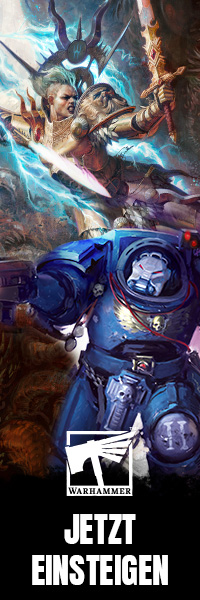







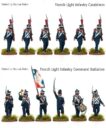


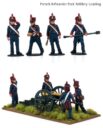
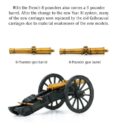

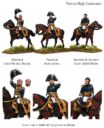



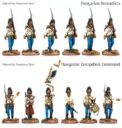

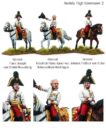




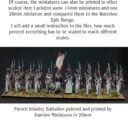
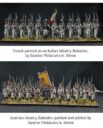


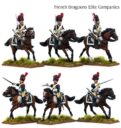






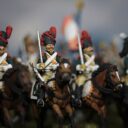























Sehr schöne Modelle. Könnte man ja fast in Versuchung kommen….
Wow, erneut beweist er, was er kann. Historisch sah wohl nie besser aus!
Chapeau.
Gibt übrigens ein Interview bei Magabotato mit dem Macher. Lucas Luber.
Sehr schöne Miniaturen, sehr klar und sauber im Detail. Manche Posen wirken mir zu ruhig, gerade bei der Bedienungsmannschaft der Artillerie. Aber das ist tatsächlich Jammern auf hohem Niveau. Ich finde alles von Piano Wargames sehr gelungen.
Es ist nahezu unglaublich was der Jung‘ in so kurzer Zeit auf die Beine gestellt hat. Die Figuren sind auf dem Niveau der Perrys und die haben ja gefühlte 300 Jahre Erfahrung. Super STL’s, gut gegossene Schilling Metall Figuren, preislich absolut fair. Für mich die größte Erfolgsstory im Hobby seit Jahren.
Hoffe da kommt noch einiges, gerne auch wieder kleinere Themen, die sonst nicht so vertreten sind.
Schweden, Dänemark, Osmanen, Spanier etc.
Kann euch nur völlig zustimmen! Hab ein paar der Sets und die sind großartig. Leider ist mein Maltempo zu langsam um eine ordentliche Armee für die Franzosenkriege aufzustellen.
Als jemand der weniger Ahnung von tatsächlicher Taktik hat:
Wie effektiv waren denn in Zeiten der Linieninfanterie Kavallerie, insbesondere Uhlane? Ich meine die rennen alle mit tödlicher Schusswaffe herum und sobald das erste Pferd (als riesiges Ziel) umfällt, stolpert da dann nicht alles drüber? Oder wartete man bewusst das lange Laden für den Angriff zu Pferde ab?
Ich mag mich täuschen aber meines Wissens nach waren die Rollen von Kavallerie-Einheiten in dieser Zeit die Bedrohung von Flanken und Verfolgung von gebrochenen Einheiten, die bereits Fliehen. Das und reconnaissance
Die Kavallerie war in der napoleonischen Zeit immer noch die wichtigste und vielseitigste Waffengattung. Die Geschwindigkeit war der Faktor, man muss bedenken, dass die Musketen immer noch eine recht kurze Reichweite hatten. Auch richtig ist, dass das Nachladen lange dauerte. Wenn 500, 800 oder gar 1000 Reiter auf die Linie stürmen, dann können die nicht alle aufgehalten werden. Außerdem war die Kavallerie gegen gegnerische Kavallerie immens wichtig. Und um feindliche Plänkler zu zerstreuen, fliehende Feinde zu zerschlagen etc.pp.
Erst im Krimkrieg und amerikanischen Bürgerkrieg nahm die Bedrohung der Infanterie durch Kavallerie ab.
Okay, klingt danach, als würde es sich (wie offenbar in jedem Krieg) extrem auszahlen NIE in der ersten Reihe zu kämpfen. Der Adrenalinrush ist eine Kugel nicht wert.
Wie bereits erwähnt spielte die Kavallerie in den napoleonischen Kriegen eine wichtige Rolle. In der Unterteilung zwischen der leichten und der schweren Kavallerie hatte letztere den Angriff auf die Infanterie erst dann durchgeführt wenn diese schon stark erschüttert und sich in Auflösung befand. Damit stellte man sicher die gegnerische Formation endgültig zu vertreiben und einen Moment des Entsetzens in die gegenerischen Reihen zu bringen. Dieses Vorgehen schonte auch die eigene Kavallerie. Ausnahmen gab es natürlich auch, siehe Waterloo. Im Reglement der Kavallerie gab es auch eins für das Angreifen. Man stürmte nicht auf langer Distanz auf den Gegner im gestreckten Galopp los. Die Formation bewegte sich geschlossen im Trab an den Gegner heran um dann kurz vorher in den Galopp überzugehen. So bestand wahrscheinlich auch die Möglichkeit den gestürzten Pferden auszuweichen und die Formation blieb intakt, in der Theorie.
Die gängige Infanterieprozedur beim Schießen (nehmen wir mal Spezialformationen wie preußische Jäger oder britische Rifles aus) war, die Muskete auf den Pulk des Feindes auszurichten, eine gemeinsame Salve in Richtung der Masse abzufeuern und dann für die nächste Salve nachzuladen (oder zum Bajonettangriff überzugehen). Die Wirkung wurde durch die Masse erzielt, nicht das genaue Zielen. Hinzu kommt, dass die effektive Reichweite einer Muskete bei etwa 100 m lag und somit gegen Kavallerie oft nur eine Salve möglich war. Somit war es schwer, Kavallerie durch Beschuss aufzuhalten.
Solange keine eigene Kavallerie die feindliche vertreiben und somit die Flanken schützen konnte, war die einzig effektive Verteidigung von Infanterie, ins Karree zu gehen, um keine gefährdeten Flanken mehr zu haben. Das schränkte allerdings die Beweglichkeit der Infanterie extrem ein und verlangsamte sie bis aufs Schneckentempo, außerdem waren Karrees aufgrund der großen Dichte lohnende Ziele für Artillerie.
Grob gesagt stellte Infanterie in Linien- oder Kolonnenformation aufgrund der verwundbaren Flanken für Kavallerie ein leichtes Ziel dar, während ein Infanteriekarree für Kavallerie fast nicht zu knacken war. Es war also eine Frage des taktischen Zusammenspiels der verschiedenen Truppengattungen, wie effektiv Kavallerie war.
Tolle sculpts und umso schöner von Stephan Huber bemalt. Gibt es einen besseren?